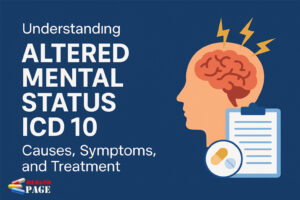ICD 10 Code for Acute Hypoxic Respiratory Failure: The Ultimate Guide
Acute hypoxic respiratory failure is a serious medical condition where your blood oxygen levels drop dangerously low while carbon dioxide levels remain normal. Medical professionals use the specific ICD-10 code J96.01 to document and bill for this condition.
The ICD-10 coding system is a standardized method used in healthcare settings to classify and record all diagnoses, symptoms, and procedures. Accurate coding for acute hypoxic respiratory failure is important for:
- Proper documentation of patient care
- Insurance reimbursement
- Healthcare data analysis
- Research purposes
- Quality monitoring
Your healthcare provider may diagnose acute hypoxic respiratory failure when your blood oxygen saturation falls below 90% despite breathing room air. This condition can develop quickly and requires immediate medical attention.
The ICD-10 code J96.01 is:
- Billable/specific enough for claim submission
- Valid for the fiscal year 2024
- Part of the respiratory system disease category (J00-J99)
This guide will walk you through essential aspects of acute hypoxic respiratory failure and its ICD-10 coding, including:
- Clinical manifestations and causes
- Diagnostic criteria
- Treatment approaches
- Related ICD-10 codes
- Billing considerations
- Patient prognosis factors
Understanding these elements helps ensure accurate medical documentation and appropriate patient care delivery.
Causes and Symptoms of Acute Hypoxic Respiratory Failure
Acute hypoxic respiratory failure stems from various underlying conditions that impair the lungs’ ability to deliver oxygen effectively to the bloodstream. Understanding these causes helps healthcare providers make accurate diagnoses and select appropriate treatment approaches.
Primary Causes:
- Pneumonia and Infections: Bacterial pneumonia, viral respiratory infections, COVID-19, severe bronchitis
- Chronic Lung Diseases: COPD exacerbations, severe asthma attacks, pulmonary fibrosis, bronchiectasis
- Trauma and Injuries: Chest injuries, near-drowning incidents, smoke inhalation, chemical exposure
- Cardiovascular Issues: Pulmonary embolism, cardiogenic pulmonary edema, severe heart failure
Key Symptoms and Warning Signs:
Physical Symptoms: Rapid breathing (tachypnea), shortness of breath at rest, use of accessory muscles for breathing, chest pain or tightness, coughing
Observable Signs: Bluish discoloration (cyanosis) of lips, fingernails, skin; confusion or altered mental status; excessive sweating; rapid heart rate
Clinical Indicators: Blood oxygen saturation below 90%, decreased partial pressure of oxygen (PaO2), normal or low carbon dioxide levels, abnormal chest X-ray findings
Healthcare professionals should monitor these symptoms closely, particularly in patients with pre-existing lung conditions or those at high risk for respiratory complications. The presence of multiple symptoms warrants immediate medical attention and potential intensive care intervention.
Understanding ICD-10 Code J96.01 for Acute Hypoxic Respiratory Failure
What is ICD-10 Code J96.01?
ICD-10 code J96.01 is a billable code used specifically for acute respiratory failure with hypoxia. It falls under the category of respiratory system disorders (J00-J99) and will be in effect starting October 1, 2024.
Breakdown of the Code Structure
The structure of the code can be understood as follows:
- J – Represents diseases of the respiratory system
- 96 – Indicates respiratory failure
- 0 – Signifies acute condition
- 1 – Specifies presence of hypoxia
Who Can Use J96.01?
Healthcare providers can use J96.01 for billing purposes if they meet the following criteria:
- Confirmation of acute respiratory failure diagnosis
- Evidence supporting the presence of hypoxia
- Arterial blood gas results indicating severity
- Documentation of patient’s oxygen requirements
When to Use J96.01?
This code allows for specific billing scenarios, including:
- Patients who are stable on room air
- Cases requiring supplemental oxygen therapy
- Instances where mechanical ventilation is necessary
- Post-procedure cases demonstrating respiratory failure
Key Documentation Requirements for J96.01
To ensure proper usage and reimbursement, healthcare providers must include the following information in their documentation:
- Clear indication of acute onset in medical records
- Blood oxygen levels recorded through arterial blood gas analysis
- Treatment modalities used such as bronchodilators or corticosteroids
- Response to interventions documented over time
- Duration of symptoms experienced by the patient
Combining J96.01 with Other Codes
In order to capture a comprehensive view of the patient’s condition, it may be necessary to combine J96.01 with additional codes such as:
- R09.02 for hypoxemia when applicable
- Underlying condition codes that contribute to respiratory failure
- Ventilator dependency codes if the patient requires mechanical support
What Not to Include with J96.01?
It is important to note that certain conditions should not be coded using J96.01:
- Chronic respiratory failure cases where there is a long-standing history
- Newborn respiratory distress situations requiring different management approaches
- Post-procedural cases demonstrating respiratory failure due to surgical interventions
- Mixed types of respiratory failure involving both obstructive and restrictive components
By understanding these guidelines, healthcare providers can ensure accurate coding and reporting practices, leading to improved patient care outcomes and streamlined reimbursement processes.

Related ICD-10 Codes for Respiratory Failure Cases
Understanding the complete spectrum of respiratory failure ICD-10 codes helps healthcare providers select the most accurate diagnosis code for billing and documentation. Here’s a detailed look at the related codes you need to know:
1. J96.00: Acute Respiratory Failure, Unspecified
- Use this code when the type of respiratory failure isn’t specified in the medical documentation
- Applicable when neither hypoxia nor hypercapnia is explicitly documented
- Requires additional documentation for specificity
2. J96.20: Acute and Chronic Respiratory Failure
- Appropriate for patients with both acute and chronic components
- Used when the patient has a pre-existing chronic respiratory condition
- Documentation must support both acute exacerbation and chronic status
3. J96.21: Acute and Chronic Respiratory Failure with Hypoxia
- Indicates presence of both acute and chronic respiratory failure with documented hypoxia
- Requires blood gas analysis or pulse oximetry results
- Common in patients with long-term lung diseases experiencing acute deterioration
Clinical Usage Guidelines:
- Document specific oxygen saturation levels
- Include arterial blood gas results when available
- Note any underlying conditions contributing to respiratory failure
- Record duration of symptoms and previous respiratory history
Coding Tips:
- Verify the presence of hypoxia through diagnostic tests
- Check for combination code requirements
- Review documentation for temporal relationships between acute and chronic components
- Consider secondary diagnosis codes for underlying conditions
Treatment Approaches for Managing Acute Hypoxic Respiratory Failure
The primary goal in treating acute hypoxic respiratory failure is to restore adequate oxygen levels while addressing the underlying cause. Healthcare providers employ a multi-faceted treatment strategy tailored to each patient’s specific needs.
Immediate Interventions:
- Supplemental oxygen therapy through nasal cannula or mask
- Position adjustments to optimize breathing mechanics
- Continuous monitoring of vital signs and oxygen saturation
- Administration of prescribed medications for underlying conditions
Advanced Breathing Support Options:
- High-flow nasal cannula (HFNC)
- Non-invasive ventilation (NIV)
- Mechanical ventilation through endotracheal intubation
- Extracorporeal membrane oxygenation (ECMO) in severe cases
The selection of breathing support method depends on:
- Severity of hypoxemia
- Patient’s respiratory effort
- Hemodynamic stability
- Presence of other organ dysfunction
- Expected duration of respiratory support
Medication Management:
- Bronchodilators to improve airway function
- Corticosteroids to reduce inflammation
- Antibiotics when bacterial infection is present
- Diuretics to manage fluid overload
Healthcare providers must closely monitor patients receiving breathing support for potential complications:
- Skin breakdown from mask interfaces
- Ventilator-associated pneumonia
- Hemodynamic instability
- Barotrauma
Rehabilitation Measures:
- Early mobilization when appropriate
- Chest physiotherapy
- Breathing exercises
- Nutritional support to maintain energy levels
The success of treatment relies heavily on the healthcare team’s ability to balance oxygen delivery with the prevention of oxygen toxicity. Regular assessment of blood gases helps guide therapy adjustments and ensures optimal oxygenation without causing harm.
Prognosis Factors and Patient Health Status Considerations in Acute Hypoxic Respiratory Failure Cases
The severity of acute hypoxic respiratory failure plays a crucial role in determining patient outcomes. Patients with mild to moderate hypoxemia often show better recovery rates when receiving appropriate treatment early. The recovery timeline can range from days to weeks, depending on:
- Blood oxygen saturation levels
- Response to oxygen therapy
- Presence of organ dysfunction
- Duration of mechanical ventilation needed
Pre-existing health conditions significantly impact a patient’s prognosis. These key factors influence recovery potential:
Age-Related Considerations
- Younger patients typically demonstrate better recovery rates
- Elderly patients may require extended rehabilitation periods
- Age-related comorbidities can complicate treatment responses
Underlying Health Status
- Chronic lung diseases
- Cardiovascular conditions
- Immune system function
- Nutritional status
- Previous respiratory failures
Critical Prognostic Indicators
- Speed of diagnosis and treatment initiation
- Severity of organ dysfunction
- Presence of sepsis or shock
- Development of complications
Healthcare providers use these factors to develop personalized treatment plans and set realistic recovery expectations. Regular monitoring of vital signs, blood gases, and organ function helps adjust treatment strategies. Patient education about lifestyle modifications, medication adherence, and follow-up care becomes essential for long-term management and prevention of future episodes.
The proper documentation of severity indicators supports accurate ICD-10 coding (J96.01), ensuring appropriate healthcare resource allocation and treatment planning for optimal patient outcomes.
FAQs (Frequently Asked Questions)
What is acute hypoxic respiratory failure and why is it important in medical coding?
Acute hypoxic respiratory failure is a serious condition characterized by inadequate oxygenation of the blood due to lung dysfunction. Accurate medical coding, specifically using ICD-10 code J96.01, is crucial for proper diagnosis documentation, treatment planning, and billing purposes.
What are the common causes and symptoms of acute hypoxic respiratory failure?
Common causes include various lung diseases that impair oxygen exchange, leading to hypoxemia. Symptoms healthcare professionals look for include shortness of breath, rapid breathing, cyanosis, and low blood oxygen levels, which are critical for timely diagnosis.
What does ICD-10 code J96.01 represent and what are its billing implications?
ICD-10 code J96.01 specifically denotes acute hypoxic respiratory failure. It is a billable code effective within the J00-J99 range that requires precise clinical criteria to be met for accurate billing and reimbursement in healthcare settings.
Which related ICD-10 codes are associated with respiratory failure cases?
Related codes include J96.00 for unspecified acute respiratory failure, J96.20 for acute and chronic respiratory failure without hypoxia, and J96.21 for acute and chronic respiratory failure with hypoxia. Selecting the correct code depends on the clinical presentation.
What treatment approaches are used to manage acute hypoxic respiratory failure?
Management strategies involve breathing support techniques such as mechanical ventilation and oxygen therapy to improve oxygenation. These interventions are vital in stabilizing patients and addressing underlying causes effectively.
How do prognosis factors and patient health status affect outcomes in acute hypoxic respiratory failure?
The severity of the condition significantly influences recovery outcomes. Additionally, considering the patient’s overall health status is essential when determining prognosis, as comorbidities and baseline health can impact treatment response and survival rates.



Pingback: Why Is Tiger Balm Illegal? 5 Dangerous Truths Revealed